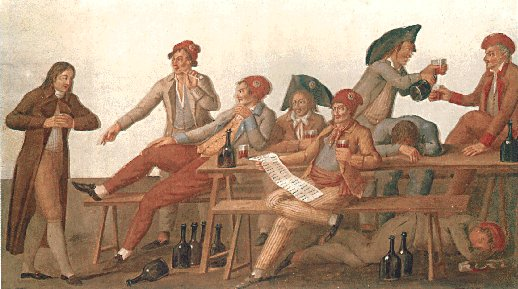Islam is based on five pillars of faith...Would you like to know more in a very easy, attractive way?, try this video:
October 22, 2013
October 13, 2013
October 08, 2013
Ancient Roman wine preserved in glass bottle
Scientists want to study samples of the world’s oldest wine, currently on display at the Historical Museum of the Palatinate in the western German city of Speyer. There’s just one problem: everyone’s afraid to open the bottle.
The glass bottle, thought to be at least 1,650 years old, was found in a Roman grave near Speyer in 1867 and put on display at the museum. Since then, it’s been handled extremely carefully, and been on display in the exact same spot in the museum for 100 years.
Museum directors fear that a moment's carelessness could shatter the bottle, destroying its priceless content. Though scientists would like to test it to figure out exactly how old the wine is and where it comes from, as well as perhaps seeing how it tastes – cracking it open is out of the question.
“It’s not clear what would happen if air gets into the wine,” said Ludger Tekampe, who heads the department responsible for storing it.
There’s also the danger that, after all this time, it could have become poisonous, although scientists suspect the alcohol would not be dangerous, but just taste disgusting.
In any event, the ultra-old wine has survived a lot, including ancient drinkers, handling on its way to the museum, and two world wars, with nary a problem.
Tekampe said he hasn’t observed any changes in the wine or its container in his 25 years at the museum, the bottle appears to have been carefully constructed by the Romans to prevent the wine from decomposing.
“The content is remarkably stable,” Tekampe said.
Still he’s the only one who handles the bottle. Everyone else is just too afraid.
“I held the bottle in my hand twice during renovations. It was a strange feeling,” Tekampe said.
from http://www.thelocal.de/
The glass bottle, thought to be at least 1,650 years old, was found in a Roman grave near Speyer in 1867 and put on display at the museum. Since then, it’s been handled extremely carefully, and been on display in the exact same spot in the museum for 100 years.
Museum directors fear that a moment's carelessness could shatter the bottle, destroying its priceless content. Though scientists would like to test it to figure out exactly how old the wine is and where it comes from, as well as perhaps seeing how it tastes – cracking it open is out of the question.
“It’s not clear what would happen if air gets into the wine,” said Ludger Tekampe, who heads the department responsible for storing it.
There’s also the danger that, after all this time, it could have become poisonous, although scientists suspect the alcohol would not be dangerous, but just taste disgusting.
In any event, the ultra-old wine has survived a lot, including ancient drinkers, handling on its way to the museum, and two world wars, with nary a problem.
Tekampe said he hasn’t observed any changes in the wine or its container in his 25 years at the museum, the bottle appears to have been carefully constructed by the Romans to prevent the wine from decomposing.
“The content is remarkably stable,” Tekampe said.
Still he’s the only one who handles the bottle. Everyone else is just too afraid.
“I held the bottle in my hand twice during renovations. It was a strange feeling,” Tekampe said.
from http://www.thelocal.de/
October 07, 2013
Archaeologists uncover a scene of horror at 'Swedish Pompeii'
Swedish archaeologists have uncovered what appears to be a 5th-century murder mystery at an island fort that's being compared to Italy's Pompeii ruins.
"It's more of a frozen moment than you normally see in archaeology," said Helene Wilhelmson, a researcher who specializes in the study of bones at Sweden's Lund University. "It's like Pompeii: Something terrible happened, and everything just stopped."
Five bodies already have been unearthed amid the ruins of one of the settlement's houses on the island of Öland, just off the Swedish coast. In a news release, Lund University said more human bones have been identified in other parts of the fort, suggesting there may be scores or hundreds of bodies yet to be dug out.
"There are so many bodies, it must have been a very violent and well-organized raid," Wilhelmson said.
She and her colleagues say the scene dates to what's known as the Migration Period, when tribes moved out from Scandinavia and other areas of northern Europe to confront a Roman Empire in decline.
During this era, it was customary for Scandinavians to burn their dead, and very few uncremated remains have previously been recovered, the university said. Was no one left to light the funeral pyre on Öland?
Another puzzling fact is that archaeologists found gilded brooches that hadn't been plundered by the attackers — and were still buried at the site 1,500 years later. Wilhelmson wonders whether the site became taboo. "I don't think anyone dared to go near it for a very long time," she said.
Lund University archaeologist Nicolo Dell'Unto is creating computerized 3-D models of the ruined fort to reconstruct the crime scene — and perhaps solve the mystery surrounding the massacre. "Using 3-D modeling gives us the unprecedented opportunity to see all the bodies simultaneously, even though the skeletons were removed one by one," Dell'Unto said.
Subscribe to:
Comments (Atom)










